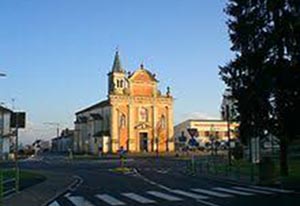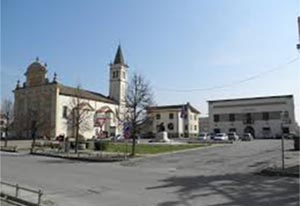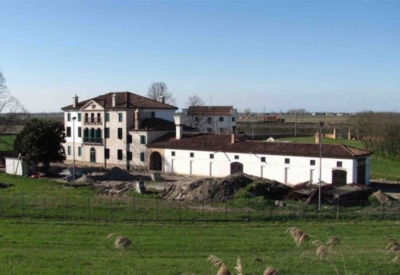CANARO
The first historical evidence of Canaro dates back to the 11th century, but its proximity to the river Po and the Poazzo, at the time one of its main branches, suggests a much earlier settlement, linked to the opportunities that the nearby waterways offered the inhabitants, both in terms of environmental resources, like fishing and timber harvesting (which ensured the livelihood of the small community) and trade, with the Po River as a major communication route.
In the Middle Ages, the whole of Polesine fell under the dominion of Ferrara, as part of the greater possessions of the Counts of Canossa, which also included the areas beyond the Po in Mantua, Modena and Reggio Emilia. Upon the death of Matilda of Canossa, the city of Ferrara retained control over the area, known as the Transpadana Ferrarese, which also included the town of Canaro.
The first documentation dates back to 1082 when the place is mentioned in a deed attesting to a donation by the Bishop of Ferrara to Gerardo di Grazioso. The life of the community was marked by frequent deviations and flooding of the great river, of which the disappearance of an important settlement nearby – Villa Lerizza in 1168 – offers indirect evidence. A later manuscript from 1178 lists it among the lands of the Benedictine monastery of Pomposa.
Being ruled by the Duchy of Ferrara brought prosperity and increasing importance to the town until the 14th century due to its strategic position, as it allowed it to control part of the Po River, which as well as being a natural boundary continued to develop as one of the main communication and trade routes in the area. In 1482, the outbreak of the Ferrara War, also known as the Salt War, had disastrous consequences for Canaro. Its unique position meant that it Venetian troops needed to conquer it, causing severe damage to its buildings in the battles that went on until 1484.
The conflict, won by the Venetians, ended with the Treaty of Bagnolo, and the territory of Canaro and Polesine in general came under the control of the Venetian Republic until the late 18th century.
The defeat of Venice in 1797 by the Grande Armée, the army that Napoleon Bonaparte deployed from 1805, marked a new annexation of the territory. The clauses of the Treaty of Campoformio gave Canaro and the entire Venetian territory over to Austria, which, however, ruled for a limited time. On 18th March 1805, Austria ceded the Austrian province of Veneto to France, with the signing of the Treaty of Presburg. Canaro therefore returned to French control as part of a new national identity, the Napoleonic Kingdom of Italy.
The second French domination lasted until the fall of Napoleon. On 20th April 1814, Veneto, including Canaro, was returned to the Habsburgs and with the fall of the Kingdom that same month, the town and the whole of Veneto became part of the Austrian Empire once more, which incorporated the territories into the Kingdom of Lombardy-Venetia from 1815. In 1838, Canaro was elevated to a municipality and remained so until its annexation to the Kingdom of Italy.
Worth Visiting
The Church of Santa Sofia. This church has existed since the beginning of the millennium and was probably enlarged or rebuilt during the 1400s and then substantially altered in the 1700s. Inside, there are some fine works of art. The 18th century marble bas-relief depicting the Last Supper on the high altar is attributed to the school of Canova
The Church of Santa Margherita is located in the Garofalo district. This church was built at the end of the 1500s, replacing the previous one built in 1289 and destroyed by a flood on the River Po
The Church of Maria Santissima Immacolata, located in the Paviole district
Villa Martelli-Piccioli seen from the bank of the Po River
Villa Martelli-Piccioli (19th century), in the Paviole district
Villa Vendramin-Calergi, in the Saline district, on the border with Fiesso Umbertiano
MUVIG, the Garofalo Virtual Museum, in the recently restored birthplace of Benvenuto Tisi, known as Garofalo, located in the hamlet of Garofolo
Teatro Comunale, the theatre created from the reconstruction of the former Casa del Fascio



